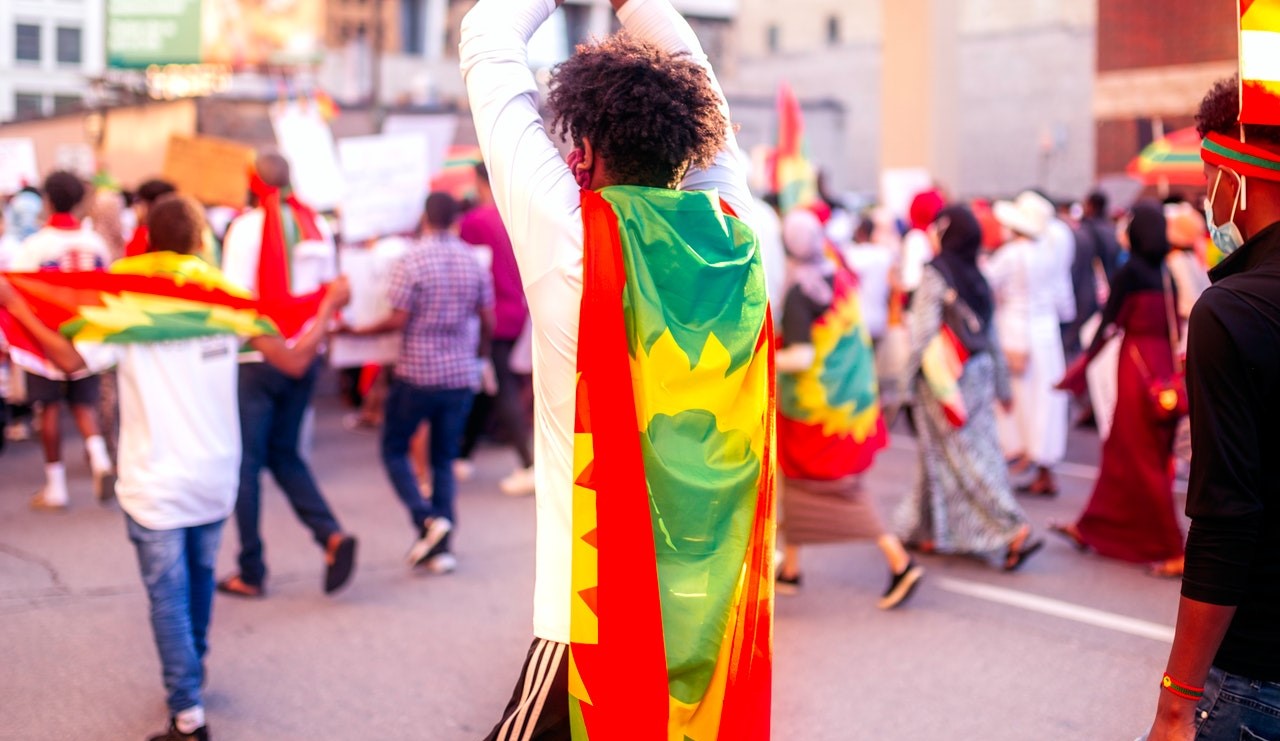
While all eyes are on the war in Ukraine, events in other regions of the world are forgotten. For this reason, in this article we would like to focus our attention on a significant conflict in Ethiopia. The state on the Horn of Africa has received most of its media attention because of the conflict that broke out in September 2020 between the TPLF and the Ethiopian government, which is headed by Nobel Peace Prize laureate Abyi Ahmed. However, there are other violent conflicts in the country, such as the conflict between the Oromo Liberation Army (OLA) and the national government.
The establishment of the Oromo Liberation Front
One of these conflicts erupted with the foundation of the Oromo Liberation Front (OLF) political party in 1973 – first over secession from Oromia, then over the self-determination rights of the Oromo, Ethiopia's largest ethnic group.[1]
Further tensions arose in the 1980s, when the ruling central government used arbitrary force against Oromo to prevent the OLF from gaining political influence as well as support from civil society. After the OLF left the government in 1992 as a result of violent clashes with its then coalition partners, the Oromo People's Democratic Organization and Ethiopian People's Revolutionary Democratic Front, war broke out. The result were massive human rights violations perpetrated by military and police forces including mass arrests, torture, abuse and targeted assassinations. Systematic action was taken against those suspected of belonging to or being associated with the OLF.[2]
After years of internal rivalries and military weakness beginning in 2006, new clashes erupted in 2015. These resulted in the bloody suppression of numerous protests in 2016. They were organized because of the government's plans to evict farmers belonging to the Oromo ethnic group from their land.
Ahmed's propagated reforms have failed – Findings from the CONIAS database
After Ahmed, who himself belongs to the Oromo ethnic group, took office as prime minister in April 2018, he announced a series of reforms that, at least formally and in the early stages, resembled a policy of de-escalation. For example, the operations of the OLF, which had previously been declared a terrorist organization, were legalized again, political prisoners were released, and media censorship was lifted.[3] While the OLF’s political wing signed a peace agreement with the government in August 2018, the military wing, known as the Oromo Liberation Army or OLF-Shane, split off.[4]
If we look at developments in recent years using our CONIAS indicators, the reality is by no means in line with the peace Ahmed propagated. In 2018/19, our database recorded an average of four months with a violent crisis in Oromia. The use of violence stems from attacks by the OLA, which have increasingly targeted ethnic Amhara in recent years, and armed confrontations with police and military forces. The conflict reached another level of escalation in 2020, when the number of violent months doubled and repression, arrests, and killings of Oromos suspected of cooperating with the OLA increased. In March 2021, the conflict escalated into a limited war, which has since resulted in over 60 deaths per month.
After the OLA was declared a terrorist organization in May 2021[5], the massacre in Tole Kebele, West Wellega, Oromia, allegedly commited by the OLA on June 18, 2022, could lead to a renewed escalation of the conflict. According to eyewitness accounts, between 300 and 400 people of Amhara ethnicity were killed.[6] Further escalation would mean not only increased military action against the OLA, but an even greater level of oppression of and repression against ethnic Oromo. While the government is currently filing regular charges against the rebel group's crimes, the OLA denies any responsibility. Clarification and international criminal prosecution of those responsible seems impossible at this point, however, because the central government does not allow an independent commission of inquiry.
This case shows how conflicts that have been going on for decades can change their dynamics, both in terms of the extent of violence and the actors involved. Therefore, it is essential and of great importance for the assessment of political risk that non-violent and violent conflicts are subjected to a long-term, monthly assessment. With this methodology applied by MBI CONIAS, it is possible to identify development trends and inform our customers about them at an early stage. For more information, please contact our team of experts.
About the author:
Sarah Pauly
CONIAS Risk Intelligence
Michael Bauer International GmbH
Sources:
[1] https://www.opride.com/2009/10/29/the-untold-history-of-ethiopia-1992-tplf-olf-war/ [22.07.2022]
[2] https://www.refworld.org/docid/42c3bd090.html#:~:text=In%20Oromia%2C%20the%20largest%20and%20most%20populous%20state,are%20unlikely%20to%20be%20presented%20with%20real%20choices.?msclkid=265400fca54d11eca4cbbcb584ee1941 [22.07.2022]
[3] https://www.bpb.de/shop/zeitschriften/apuz/308149/ethnischer-foederalismus-in-aethiopien/ [22.07.2022]
[4] https://www.africanews.com/2018/08/07/ethiopia-govt-agrees-peace-deal-with-ex-terror-group-based-in-eritrea/ [22.07.2022]
[5] https://www.aljazeera.com/news/2021/5/1/ethiopia-to-designate-tplf-olf-shene-as-terror-groups [22.07.2022]
[6] https://www.amnesty.org/en/latest/news/2022/07/ethiopia-authorities-must-investigate-massacre-of-ethnic-amhara-in-tole/; https://www.theguardian.com/world/2022/jun/20/as-many-as-320-dead-in-ethiopia-gun-attack-witnesses-suggest [22.07.2022]


